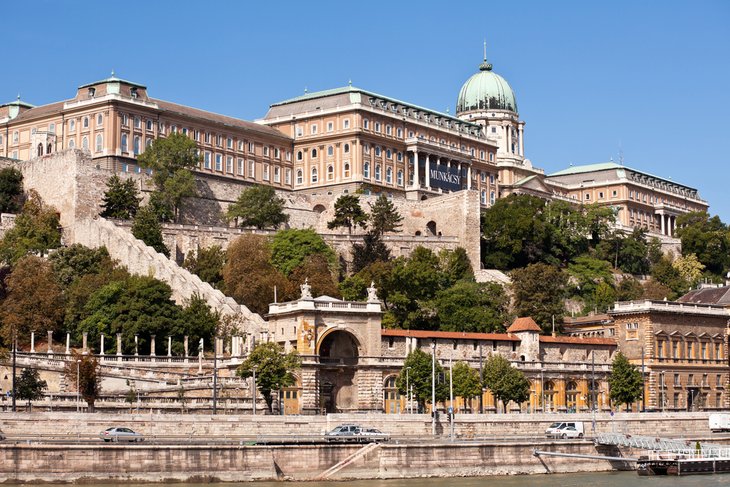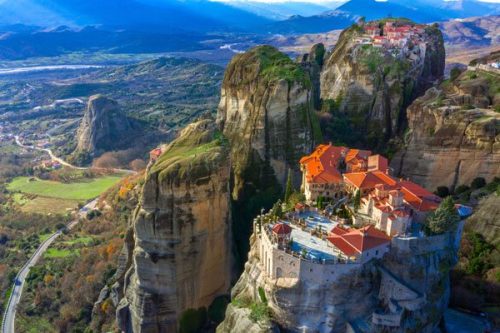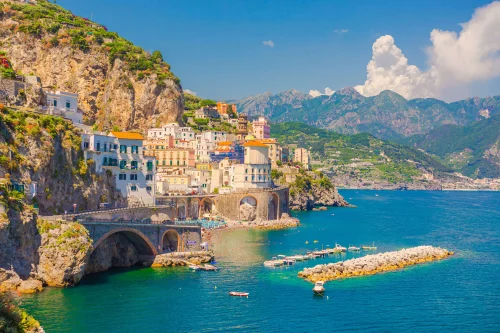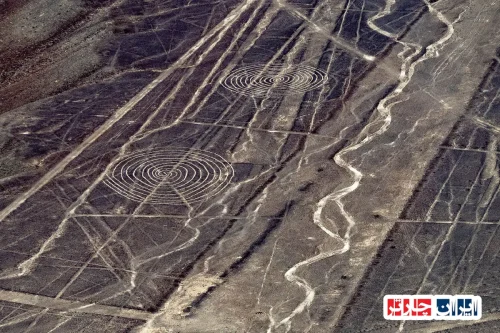Discover the Rich History and Architectural Beauty of Buda Castle Budapest Hungary
Exploring Buda Castle-Iran Charter offers a unique opportunity to immerse yourself in the historical grandeur and stunning architecture of one of Budapest’s most iconic landmarks. Located atop the Castle Hill, this majestic fortress has witnessed centuries of history, from medieval times through modern renovations, making it a must-visit destination for history enthusiasts and architecture lovers alike. The castle complex not only serves as a symbol of Hungary’s rich cultural heritage but also provides breathtaking panoramic views of the Danube River and the city below. Visitors can stroll through its ancient courtyards, explore museums housed within its walls, and admire the blend of Gothic, Baroque, and Renaissance architectural styles that tell stories of its diverse past. Whether you’re interested in the castle’s historical significance, its artistic elements, or simply seeking spectacular scenery, Buda Castle Budapest Hungary remains a captivating site that encapsulates the essence of Hungarian history and culture. Planning your visit to this historic site ensures an unforgettable experience filled with discovery, beauty, and cultural insight, making it an essential part of your journey to Budapest.
Discover the Rich History of Buda Castle Budapest Hungary: From Medieval Fortress to Cultural Landmark
Buda Castle Budapest Hungary stands as a testament to centuries of history, showcasing a blend of medieval architecture and modern restoration. Originally built in the 13th century, this historic fortress has witnessed countless events shaping Budapest’s cultural and political landscape. Its strategic location atop Castle Hill offers panoramic views of the Danube River and the city below, making it a must-visit destination for history enthusiasts. Over the centuries, Buda Castle has served as a royal residence, military stronghold, and now a UNESCO World Heritage site, symbolizing the resilience and grandeur of Hungarian heritage. Visitors can explore its ancient walls, museums, and courtyards that narrate stories from the Middle Ages to contemporary times. The castle’s evolution reflects the tumultuous history of Budapest, including periods of war, reconstruction, and cultural revival. Today, it remains a vibrant center for arts, history, and tourism, inviting travelers to immerse themselves in Hungary’s rich past. Whether you’re interested in medieval architecture or modern history, Buda Castle Budapest Hungary offers an unparalleled journey through time. Its preservation and ongoing restoration efforts ensure that future generations can continue to experience its historical significance. A visit to this iconic site provides insight into Hungary’s royal legacy and its enduring cultural identity.
Architectural Marvels of Buda Castle Budapest Hungary: Styles, Features, and Design Stories
The architecture of Buda Castle Budapest Hungary is a captivating fusion of styles that mirror its long history. The original medieval fortress was constructed in Gothic style, characterized by pointed arches, vaulted ceilings, and defensive towers. During the Renaissance period, elements of classical design were incorporated, adding elegance to the structure. Baroque influences later appeared in renovations, evident in ornate facades and decorative details. The castle’s design features include imposing towers, thick stone walls, and grand gateways that symbolize strength and authority. Intricate sculptures, heraldic symbols, and decorative motifs tell stories of artistic craftsmanship and historical symbolism. Over time, architects adapted the castle’s design to meet military needs and aesthetic preferences, resulting in a complex yet harmonious architectural ensemble. The combination of Gothic, Renaissance, and Baroque elements creates a unique visual narrative, making Buda Castle a masterpiece of architectural evolution. The design stories behind each renovation reveal the cultural influences and historical priorities of different eras. Today, the castle’s architecture continues to inspire visitors with its grandeur and intricate details, reflecting Hungary’s rich artistic heritage. Preservation efforts focus on maintaining these diverse styles, ensuring the castle’s beauty endures for future generations. Exploring its architectural features offers a deeper understanding of Hungary’s artistic and historical development over centuries.
Hidden Chambers, Palaces, and Secret Tunnels Beneath Buda Castle Budapest Hungary
Buda Castle Budapest Hungary is not only a visual marvel but also a site filled with hidden chambers and secret passages. Beneath its majestic walls lie underground tunnels, vaults, and storied chambers that have served various purposes throughout history. These subterranean features include escape routes, storage rooms, and secret meeting places used during times of conflict and political upheaval. Some tunnels were constructed for military defense, allowing quick movement of troops and supplies, while others served as hidden escape routes for royalty and officials. The underground palaces and chambers often housed treasures, artifacts, and important documents, safeguarding Hungary’s cultural heritage. Today, guided tours reveal these mysterious underground networks, offering visitors a glimpse into the castle’s secret life. Exploring these hidden spaces uncovers stories of espionage, royal intrigue, and wartime resilience. Many of these tunnels are preserved as part of the castle’s historical site, providing an immersive experience into Budapest’s clandestine past. The secret chambers and tunnels add an element of adventure and mystery, making every visit to Buda Castle Budapest Hungary an unforgettable journey into its hidden world. Preservation and research continue to uncover new secrets beneath the castle, enriching its historical narrative.
Cultural and Artistic Attractions Inside and Around Buda Castle Budapest Hungary
Buda Castle Budapest Hungary is a vibrant hub of cultural and artistic activity, hosting numerous museums, galleries, and performance venues. Inside the castle complex, visitors can explore the Hungarian National Gallery, which houses masterpieces of Hungarian art from medieval to modern times. The Budapest History Museum offers insights into the city’s development, showcasing artifacts, photographs, and exhibits that narrate Budapest’s evolution. The castle grounds also feature art galleries, showcasing contemporary Hungarian artists and traditional crafts. Around the castle, open-air theaters, sculpture parks, and cultural festivals enrich the artistic atmosphere. Regular concerts, theatrical performances, and art festivals are held in the castle courtyards, attracting both locals and tourists. The surrounding gardens and promenades provide scenic spots for relaxation and photography, with views of the Danube and Pest side of the city. These cultural attractions make Buda Castle Budapest Hungary a focal point for Hungary’s artistic heritage and contemporary creativity. Visitors are encouraged to participate in guided tours, art workshops, and cultural events to deepen their appreciation of Hungary’s rich artistic legacy. The combination of historic art collections and lively cultural programs ensures a dynamic experience for all visitors.
Best Routes and Tips for Visiting Buda Castle Budapest Hungary Efficiently
To make the most of your visit to Buda Castle Budapest Hungary, planning your route is essential. The most scenic approach is walking along the Danube promenade, which offers stunning views of the castle and the city skyline. Alternatively, taking the funicular provides a quick and picturesque ride up Castle Hill, saving time and energy. Once at the top, explore the castle grounds, courtyards, and surrounding viewpoints before diving into the interior museums and galleries. It’s advisable to start early in the day to avoid crowds and secure tickets in advance, especially during peak seasons. Guided tours can enhance your experience by providing detailed historical insights and stories behind the architecture and artifacts. Comfortable footwear is recommended, as the castle complex involves uneven surfaces and stairs. Nearby cafes and restaurants offer convenient spots for breaks and refreshments. For a comprehensive visit, allocate at least half a day to explore all major attractions thoroughly. Using public transportation or parking facilities nearby can streamline your journey. Planning ahead ensures a smooth, enjoyable experience, allowing you to appreciate the full grandeur of Buda Castle Budapest Hungary.
Nighttime Magic at Buda Castle Budapest Hungary: Festivals, Concerts, and Mystical Tours
Visiting Buda Castle Budapest Hungary at night transforms the experience into a magical journey. The castle is beautifully illuminated, highlighting its architectural details and creating a fairy-tale atmosphere. Nighttime events include cultural festivals, open-air concerts, and special guided tours that delve into the castle’s mysterious past. Many festivals feature traditional Hungarian music, dance, and cuisine, offering an immersive cultural experience under the stars. Night tours often include stories of haunted chambers, legends, and historical mysteries, appealing to those interested in the castle’s darker side. The ambiance of illuminated courtyards and panoramic views over Budapest makes evening visits particularly memorable. Some events also include fireworks displays, adding to the spectacle. It’s recommended to check the castle’s event schedule in advance to participate in these unique nighttime experiences. Visiting at night provides a different perspective on the castle’s history and architecture, making it an unforgettable highlight of your Budapest trip. The combination of lights, music, and stories creates a captivating atmosphere that enchants every visitor.
Historical Events and Recent Restorations of Buda Castle Budapest Hungary
Buda Castle Budapest Hungary has a storied history marked by significant events and extensive restorations. Throughout centuries, it has endured wars, sieges, and political upheavals, often suffering damage that required careful reconstruction. Major restoration projects have aimed to preserve its original architectural integrity while adapting to modern standards. After World War II, the castle underwent a series of renovations to repair war damages and restore its former glory. Recent restoration efforts focus on consolidating the structure, restoring decorative elements, and enhancing visitor facilities. These projects ensure the castle remains a symbol of resilience and cultural pride. Each phase of restoration is guided by historical accuracy and craftsmanship, maintaining the authenticity of this iconic monument. The ongoing preservation work allows visitors to experience the castle’s historical grandeur as it was centuries ago. It also reflects Hungary’s dedication to safeguarding its cultural heritage for future generations. Visiting Buda Castle Budapest Hungary offers a chance to witness both its ancient origins and the modern efforts to keep its history alive.
Practical Tips for Visiting Buda Castle Budapest Hungary: Tickets, Access, and Safety
Planning your visit to Buda Castle Budapest Hungary involves several practical considerations. It’s advisable to purchase tickets online in advance to avoid long queues, especially during peak tourist seasons. The castle is accessible via multiple routes, including walking paths, the funicular, and public transportation. For those with mobility challenges, accessible entrances and elevators are available, ensuring everyone can enjoy the site comfortably. It’s recommended to wear comfortable shoes due to uneven surfaces and cobblestone streets within the castle complex. Facilities such as restrooms, cafes, and information centers are conveniently located nearby. Always check the opening hours and any special events or closures before your visit. For safety, adhere to posted signs and guidelines, especially when exploring underground tunnels or construction areas. Guided tours are highly recommended for a richer understanding of the site’s history and hidden stories. With proper planning, your visit to Buda Castle Budapest Hungary will be smooth, safe, and memorable, providing a deep appreciation of its historical and cultural significance.
Annual Festivals and Cultural Events at Buda Castle Budapest Hungary
Buda Castle Budapest Hungary hosts a variety of festivals and cultural events throughout the year, celebrating Hungarian traditions and arts. The Budapest Summer Festival features outdoor concerts, theater performances, and dance shows in the castle courtyards, attracting thousands of visitors. The Castle Bazaar offers local crafts, food, and folk performances, providing an authentic cultural experience. During Christmas, the castle transforms into a festive wonderland with markets, light displays, and seasonal concerts. The Hungarian National Day celebrations include parades, fireworks, and performances that highlight national pride. Art exhibitions, film screenings, and historical reenactments are also part of the annual calendar, enriching the cultural landscape. Attending these events allows visitors to immerse themselves in Hungary’s vibrant traditions and artistic expressions. It’s recommended to check the official schedule beforehand to plan your visit around these lively festivities. Participating in these celebrations makes your trip to Buda Castle Budapest Hungary more meaningful and memorable, connecting you deeply with Hungarian culture and history.

Frequently Asked Questions About Buda Castle Budapest Hungary
- What is the historical significance of Buda Castle?
- Buda Castle has played a central role in Hungary’s history since its construction in the 13th century. It has served as a royal residence, military fortress, and cultural landmark. Its strategic location atop Castle Hill offers panoramic views of Budapest and the Danube River. Over centuries, it witnessed numerous historical events, including wars, sieges, and political changes, symbolizing resilience and national pride. Today, it stands as a UNESCO World Heritage site, representing Hungary’s rich cultural heritage and architectural evolution.
- How has the architecture of Buda Castle evolved over time?
- The architecture of Buda Castle reflects a blend of Gothic, Renaissance, and Baroque styles. Originally built in Gothic style, later renovations incorporated Renaissance elements, adding elegance and symmetry. Baroque influences appeared during subsequent restorations, characterized by ornate facades and decorative details. Each era’s architectural features tell stories of artistic trends and historical priorities, resulting in a harmonious fusion of styles that make the castle a visual masterpiece.
- Are there any secret tunnels or hidden chambers beneath Buda Castle?
- Yes, beneath Buda Castle lie numerous underground tunnels, vaults, and chambers that served various purposes historically. These include escape routes, storage rooms, and secret meeting places used during conflicts and political upheavals. Some tunnels were built for military defense, while others safeguarded treasures and important documents. Guided tours often explore these underground networks, revealing stories of espionage, royal intrigue, and wartime resilience.
- What cultural attractions can visitors explore inside Buda Castle?
- Inside Buda Castle, visitors can explore the Hungarian National Gallery, which houses Hungarian art from medieval to modern times. The Budapest History Museum offers insights into the city’s development through artifacts and exhibits. The castle grounds also feature art galleries, theaters, and open-air performances. Surrounding gardens and courtyards host festivals, concerts, and cultural events, making the castle a vibrant hub of artistic activity.
- What are the best ways to visit Buda Castle efficiently?
- To optimize your visit, consider walking along the Danube promenade for scenic views or taking the funicular for a quick ascent. Starting early helps avoid crowds, and booking tickets in advance is recommended. Guided tours enrich the experience with historical insights. Wear comfortable shoes due to uneven surfaces, and plan at least half a day to explore all major attractions. Nearby cafes provide convenient spots for breaks.
- What makes nighttime visits to Buda Castle special?
- At night, Buda Castle is beautifully illuminated, creating a fairy-tale atmosphere. Night events include festivals, concerts, and guided tours that explore legends and haunted chambers. The illuminated architecture and panoramic views over Budapest make evening visits memorable. Some festivals feature traditional music, dance, and fireworks, offering a unique cultural experience under the stars.
- How has Buda Castle been restored over the years?
- The castle has undergone numerous restorations due to damages from wars and natural aging. Post-World War II, extensive renovations repaired war damages and preserved its architectural integrity. Recent projects focus on consolidating structures, restoring decorative elements, and improving visitor facilities. These efforts ensure the castle remains a symbol of resilience and cultural pride, allowing visitors to experience its historical grandeur.
- Are there any festivals or events held at Buda Castle?
- Yes, Buda Castle hosts various festivals throughout the year. The Budapest Summer Festival features outdoor concerts and performances. During Christmas, the castle transforms into a festive market with lights and seasonal events. National celebrations include parades and fireworks. Art exhibitions, folk festivals, and cultural reenactments also take place, offering visitors a chance to engage with Hungarian traditions and arts.
- What practical tips should visitors keep in mind?
- Buy tickets online in advance to avoid queues. Use public transportation or the funicular for easy access. Wear comfortable shoes for uneven surfaces. Check opening hours and event schedules beforehand. Facilities like restrooms and cafes are nearby. Guided tours can deepen understanding of the site’s history. Planning your visit helps ensure a smooth and enjoyable experience.
- Is Buda Castle suitable for all visitors?
- Yes, Buda Castle is accessible to most visitors. There are elevators and accessible entrances for those with mobility challenges. However, some areas involve stairs and uneven terrain, so comfortable footwear is recommended. Guided tours and information centers assist visitors in navigating the site comfortably.
- What are the main attractions around Buda Castle?
- The surrounding area includes Fisherman’s Bastion, Matthias Church, and the Castle Hill Funicular. The Danube promenade offers scenic views, and nearby parks provide relaxing spots. These attractions complement the castle visit and offer additional insights into Budapest’s historic and cultural landscape.
- How does Buda Castle reflect Hungary’s cultural heritage?
- The castle embodies Hungary’s artistic, architectural, and historical evolution. Its diverse styles showcase different eras, from Gothic to Baroque. As a UNESCO World Heritage site, it symbolizes national resilience, royal legacy, and cultural identity. Preserving and showcasing its history helps keep Hungary’s rich traditions alive for future generations.
- What safety tips should visitors follow?
- Adhere to posted signs and guidelines, especially when exploring tunnels or construction areas. Keep an eye on children and avoid restricted zones. Use designated pathways and be cautious on uneven surfaces. During events, follow security instructions for a safe experience.

























